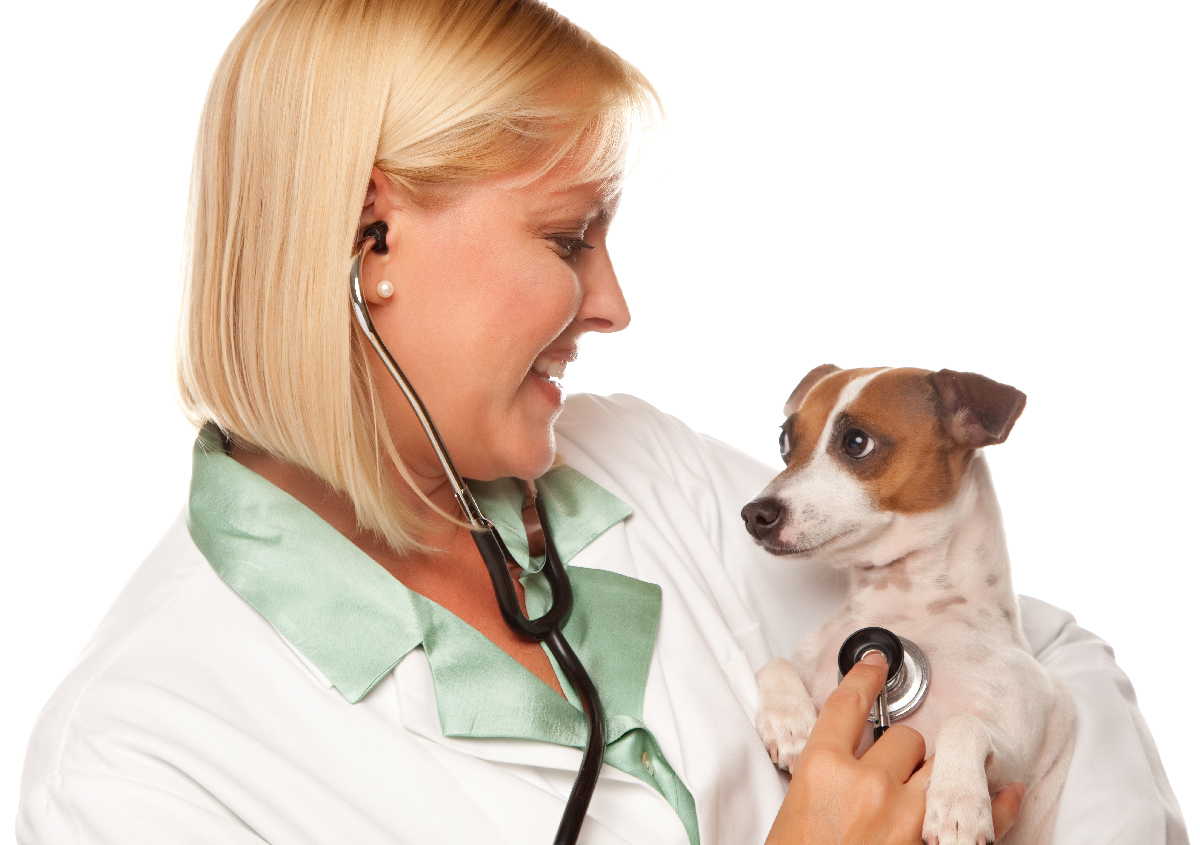What Pet Owners Should Know About CT Scans For Dogs}
Wiki Article
What You Required to Learn About Vet Services: A Review of Diagnostic Devices and Procedures
Veterinary solutions play a crucial function in keeping the wellness of pets. Routine exams can disclose surprise wellness problems early. Different diagnostic tools and procedures, such as blood examinations and imaging methods, give vital understandings right into an animal's wellness. Recognizing these techniques is vital for family pet owners. What details analysis procedures are most generally used, and how can they impact a pet dog's therapy plan?Relevance of Routine Vet Exams
While numerous animal proprietors might undervalue the significance of normal vet examinations, these appointments are vital for maintaining an animal's general health and wellness. Regular sees to the veterinarian enable early detection of possible health issues prior to they intensify into major problems. Regular check-ups typically consist of vaccinations, which are necessary for stopping transmittable conditions that might severely impact a pet's wellness. Additionally, these appointments provide a possibility for vets to assess the animal's weight, oral health and wellness, and general condition, making certain that the pet is flourishing. Throughout these sees, animal owners can additionally obtain beneficial recommendations on diet, exercise, and preventive care tailored to their specific animal's requirements.Typical Diagnostic Procedures in Vet Medicine
In veterinary medication, accurate medical diagnosis is essential for reliable therapy. Typical diagnostic procedures consist of blood screening strategies, progressed imaging modern technologies, and urinalysis, each playing a significant function in determining health concerns. Comprehending these approaches enhances the capacity to give suitable look after animal clients.Blood Checking Strategies
Blood testing strategies act as important diagnostic tools in vet medicine, making it possible for vets to examine the health and wellness of animals properly. These strategies include gathering blood samples to assess different components, such as red and white blood cells, platelets, and biochemical markers. Typical tests include total blood counts (CBC), which examine general wellness and find infections, and biochemical panels, which evaluate organ feature and metabolic standing. In addition, serological tests can determine specific diseases via antibody discovery. Blood screening is minimally invasive and offers vital information that assists in diagnosing problems, monitoring wellness condition, and assessing feedbacks to therapies. Overall, these techniques play an essential role in making sure optimal treatment for animals and animals alike.Imaging Technologies Made Use Of
Diagnostic imaging modern technologies are essential tools in vet medicine, enhancing blood screening methods by supplying visual understandings right into a pet's internal structures. Usual imaging modalities include X-rays, which are beneficial for evaluating bone cracks and finding foreign items, and ultrasound, which allows for real-time visualization of soft cells and organs. Magnetic vibration imaging (MRI) uses comprehensive photos of complicated physiological areas, particularly in neurological analyses. Computed tomography (CT) gives cross-sectional images, improving analysis precision for numerous conditions. Each of these technologies aids veterinarians in identifying health problems, preparing treatments, and keeping an eye on recovery. By incorporating imaging innovations, veterinary specialists can better assess an animal's health and wellness and make informed choices regarding their care.
Urinalysis and Diagnostics
Urinalysis acts as an important diagnostic tool in veterinary medicine, giving useful insights right into an animal's general health and aiding in the detection of numerous problems. This non-invasive treatment evaluates urine examples to examine kidney function, hydration status, and metabolic problems. Common components examined consist of specific gravity, pH levels, sugar, healthy proteins, and the visibility of blood or bacteria. Abnormal findings can indicate concerns such as urinary system tract infections, diabetic issues mellitus, or kidney condition. To enhance diagnostic precision, urinalysis is frequently executed combined with other examinations, such as blood job and imaging researches. Early detection via urinalysis can lead to timely interventions, boosting the prognosis for several veterinary patients. It is a vital facet of detailed veterinary care.Comprehending Blood Tests and Laboratory Analysis
Understanding blood examinations and laboratory analysis is important in vet medication as it aids in identifying various wellness problems in animals. Different kinds of blood tests give necessary info about an animal's inner state, while interpreting laboratory results requires cautious factor to consider of various factors. This area will certainly explore the kinds of blood examinations offered and the importance of their results.Sorts Of Blood Tests
Blood examinations play a crucial duty in veterinary medicine, providing necessary understandings right into a pet's wellness standing. Various kinds of blood examinations are utilized, each serving different functions. Total blood matters (CBC) assess general wellness and detect conditions such as anemia or infection. Biochemical profiles examine body organ feature by gauging enzymes and electrolytes, offering insights into metabolic health. Serological examinations determine certain antibodies or pathogens, helping in the medical diagnosis of infections or autoimmune illness. Blood inputting warranties safe transfusions, while coagulation tests gauge the blood's capability to embolisms, crucial for surgeries. These examinations jointly enhance diagnosis, therapy planning, and monitoring of an animal's health and wellness, showing the value of extensive lab evaluation in veterinary treatment.
Interpreting Laboratory Outcomes
A comprehensive analysis of laboratory outcomes is crucial for precise medical diagnosis and therapy in veterinary medicine. Translating laboratory results requires an understanding of typical reference arrays and the importance of variances. have a peek at this website Blood examinations can disclose various health and wellness signs, such as body organ feature, electrolyte balance, and the visibility of infections. Vets should consider the whole professional picture, including the animal's history, physical evaluation searchings for, and any type of go to this site signs and symptoms provided. Variants in results might occur from elements such as age, breed, and underlying wellness problems. Laboratory results ought to not be viewed in isolation but rather as part of an all-inclusive diagnostic strategy. Accurate interpretation enables for customized therapy strategies and much better end results for veterinary individuals.Imaging Techniques: X-rays, Ultrasounds, and Beyond
Imaging methods are important tools in veterinary medicine, providing essential understandings into the wellness and well-being of pets. Amongst one of the most frequently utilized approaches are X-rays and ultrasounds. X-rays are indispensable for visualizing bone frameworks, assisting vets determine cracks, growths, or international things. This technique is non-invasive and fast, making it optimal for immediate situations.Ultrasounds, on the various other hand, use audio waves to develop pictures of soft cells and body organs. This method is specifically helpful for analyzing the heart, abdominal area, and reproductive organs, permitting vets to examine problems like liquid accumulation or organ abnormalities.Beyond X-rays and ultrasounds, progressed imaging methods such as computed tomography (CT) and magnetic resonance imaging (MRI) are significantly used in veterinary method. These techniques offer comprehensive cross-sectional photos, improving the precision of medical diagnoses and treatment strategies. Ultrasound For Dogs. Overall, imaging techniques play a necessary function in making certain efficient veterinary careThe Function of Biopsies in Diagnosing Animal Health Issues
Precision in identifying wellness concerns in pets commonly pivots on using biopsies, which provide clear-cut details regarding cells abnormalities. A biopsy entails the removal of a little sample of cells for exam under a microscopic lense, enabling veterinarians to identify different conditions, consisting of infections, tumors, and inflammatory illness. This analysis tool is necessary for comparing benign and deadly growths, leading therapy choices, and examining the extent of a condition.Biopsies can be executed using numerous methods, such great site as needle desire, incisional biopsies, or excisional biopsies, depending upon the place and kind of tissue included. The choice of method might impact recuperation time and the amount of tissue collected. Eventually, the info obtained from a biopsy can lead to targeted treatments, improving end results for family pets dealing with significant health challenges. Veterinarians highlight the value of this procedure in attaining precise medical diagnoses and effective treatment plans.Advanced Diagnostic Tools: Endoscopy and CT Checks

Advanced analysis tools, such as endoscopy and CT scans, play a vital role in modern vet medication, using non-invasive approaches to picture inner frameworks and detect different conditions in family pets. Endoscopy entails making use of an adaptable tube furnished with a video camera, permitting vets to examine the intestinal tract and breathing system straight. This strategy can expose problems such as lumps, foreign bodies, or swelling, making it possible for targeted therapy plans.CT scans, on the other hand, use innovative imaging innovation to create comprehensive cross-sectional images of the body (CT Scans For Animals). This approach is especially beneficial for evaluating facility structures like the brain, spinal column, and joints. By providing high-resolution pictures, CT scans help vets in recognizing concerns that may not appear through traditional radiography. With each other, these innovative devices boost analysis precision, boost treatment outcomes, and ultimately add to better general pet dog wellness management

Analyzing Test Outcomes: What Animal Owners Should Know
Understanding test outcomes can be a difficult job for pet proprietors, particularly after innovative procedures like endoscopy and CT scans have actually been performed. Analyzing these results requires an understanding of clinical terms and a clear understanding of what the findings indicate about the pet dog's wellness. Vets often offer explanations, yet the complexity of the outcomes can still bring about confusion.Pet owners must actively involve in conversations with their veterinarians, asking questions to clear up any kind of uncertainties. It is important to understand irregular versus regular results and the effects for the pet dog's therapy plan. Furthermore, identifying that some outcomes may need more screening or surveillance can help proprietors stay educated regarding their family pet's health trip. Inevitably, a joint technique between family pet owners and vet professionals fosters far better health and wellness outcomes and improves the general care experience for animals.Often Asked Inquiries
How Do I Pick the Right Veterinary Facility for My Pet?
Selecting the ideal vet facility includes investigating local options, reviewing certifications, visiting centers, and analyzing personnel communications (CT Scans For Dogs). Prioritizing suggestions from relied on resources can assist guarantee the ideal treatment and setting for a family pet's wellness demandsWhat Should I Do if My Pet Dog Declines to visit the Veterinarian?
When a pet dog declines to visit the vet, it's advisable to continue to be calm, use deals with or toys to tempt them, and take into consideration arranging a home browse through if anxiousness persists. Patience and favorable reinforcement are key.Exist Telehealth Options for Vet Solutions?
Telehealth alternatives for vet solutions are increasingly offered, permitting animal owners to speak with veterinarians from another location. These services allow discussions regarding health worries, guidance on small disorders, and follow-ups without needing to go to a clinic.
How Often Should My Pet Dog Have Oral Exams?
The frequency of oral exams for pet dogs typically relies on their age and type. Normally, vets advise yearly oral evaluations, although some pet dogs may call for even more constant sees to keep ideal oral health and wellness.
What Are the Costs Connected With Vet Diagnostics?
The costs connected with vet diagnostics can differ commonly, normally varying from fundamental tests like blood work to innovative imaging strategies. Variables affecting expenditures consist of the center's location, tools used, and particular tests needed for every family pet. Vet solutions play a crucial duty in preserving the wellness of family pets. While many pet dog proprietors might take too lightly the value of normal veterinary check-ups, these appointments are important for keeping a pet's general wellness. In addition, these appointments offer a possibility for veterinarians to analyze the pet's weight, dental health and wellness, and total problem, guaranteeing that the pet dog is prospering. Precision in diagnosing health and wellness concerns in pets frequently pivots on the use of biopsies, which give conclusive details regarding tissue abnormalities. Furthermore, identifying that some outcomes might need further testing or surveillance can help owners remain notified concerning their family pet's health journey.Report this wiki page